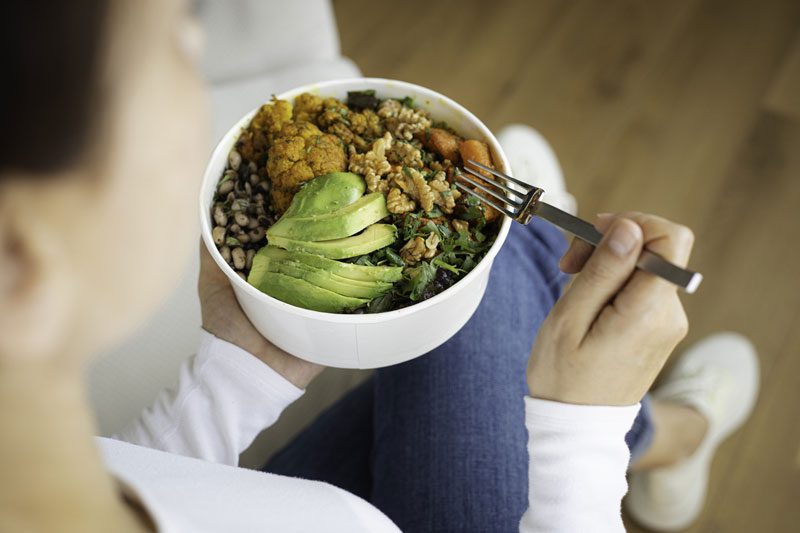Winter Weather
The winter months can be challenging for everyone, especially when weather conditions force us to spend more time indoors, and everything from driving to work to getting the kids bundled up to catch the school bus can feel more difficult. Add the significant stress of the holiday season to those feelings of cabin fever and ongoing struggle, and wintertime might seem like less and less of a wonderland.
For some people, however, the problem is more serious than a simple case of the ordinary winter blues. For those struggling with seasonal affective disorder—or SAD—the winter months can be particularly difficult. And those struggles can sometimes lead to the misuse of drugs or alcohol, which can, in turn, lead to addiction. If a person in recovery is also battling seasonal affective disorder, the chance of relapse increases as well.
As a result, it is important to understand what seasonal affective disorder is, how you can recognize it, what strategies are available for combatting it, and how it can undermine your sobriety if you don’t address the problem head on.
Separating Sad from SAD
We don’t want to be alarmist here. It is perfectly natural to feel sad sometimes—and not just in the winter! So if you are feeling a little blue in the colder, darker months, you shouldn’t automatically assume you are suffering from seasonal affective disorder.
That said, if you already have a major depressive disorder diagnosis or if you are experiencing some or all of the following symptoms, it is a good idea to have a conversation with a physician.
Signs and Causes of SAD
The warning signs of seasonal affective disorder are varied, but the primary markers include:
- Low energy and excessive sleeping
- Weight gain as a result of overeating and craving carbs
- Difficulty concentrating
- Increased anxiety or feelings of hopelessness
These symptoms may be caused by a number of related factors including a reduction in serotonin levels as a result of less exposure to sunlight; a lack of Vitamin D in the body due to a lack of sunlight exposure; and a rise in levels of melatonin, resulting in more desire for sleep and less overall energy.
If you are experiencing these symptoms and are eager for relief, you may find yourself tempted to misuse drugs or alcohol.
Sliding from Seasonal Affective Disorder to Substance Use Disorder
The negative feelings experienced by those with SAD can lead to some poor self-medicating choices. It might seem as though taking drugs or drinking alcohol alleviates the symptoms of SAD, but it’s a short-term solution with real long-term downsides—including the possibility of addiction or relapse.
Obviously, you don’t want to “solve” one problem by creating another, potentially even more serious, problem. So what are the options for coping with seasonal affective disorder in a constructive way?
Shining a Light on SAD – and Other Options for Relief
Wintertime can mean less access to sunlight, and that seems to be a significant contributing factor in the development of seasonal affective disorder. So, one potential solution is to make a concerted effort to get under the sun—or a sun alternative.
To do this, you may have to steel yourself against the cold and get outside every day for a walk (the exercise itself can help, too!). Even if you just simply can’t stand to go outside in frigid conditions, you might find value in opening all your curtains, shades, and blinds to invite more light into your home and work spaces. If you have the means, you might consider spending some portion of the winter months someplace warmer and sunnier. Or you might turn to the simulated sunlight produced by light boxes designed specifically to counteract the effects of seasonal affective disorder.
Your doctor may also recommend Vitamin D supplements in the winter to make up for what you aren’t receiving from sun exposure. Or you could actively seek more Vitamin D in your diet. Many fish are rich in Vitamin D. It can also be found in various fortified yogurts, cereals, juices, and milk (including chocolate milk!) as well as in mushrooms, hard-boiled eggs, and pork. A commitment to good nutrition can aid in your recovery as well as help you deal with seasonal affective disorder.
A therapist may also be able to offer you strategies for overcoming the negative thoughts that often accompany SAD, making it easier for you to cope. This may not totally eliminate the need for some of the options listed above, but working with a counselor could provide a firmer foundation from which to approach your struggles with seasonal affective disorder.
In some cases, antidepressants or meds to control anxiety may be an appropriate path to pursue—if those medications do not threaten your sobriety.
We Are Here to Help in Any Season
If you are struggling with seasonal affective disorder and a substance use disorder, you might be feeling pretty hopeless. But all of us at Bel Aire Recovery Center are ready to help in the darkest days of winter—and throughout the year, as well. We understand the connections between SAD and increased risk of addiction or relapse, and we are able to provide strategies and resources that will help you continue your recovery journey with confidence. In fact, we are confident that we can help you replace those feelings of SAD-ness with feelings of gladness.




